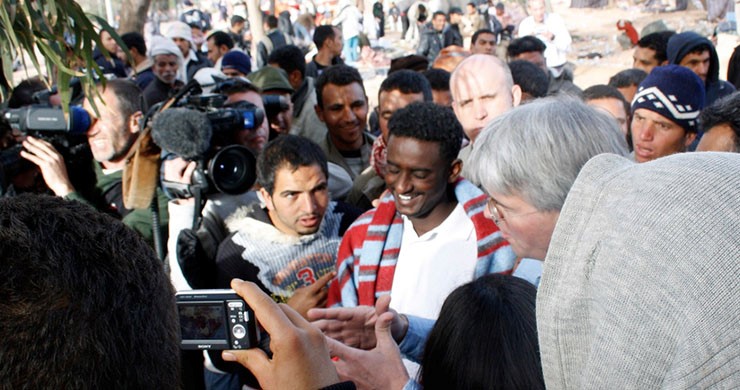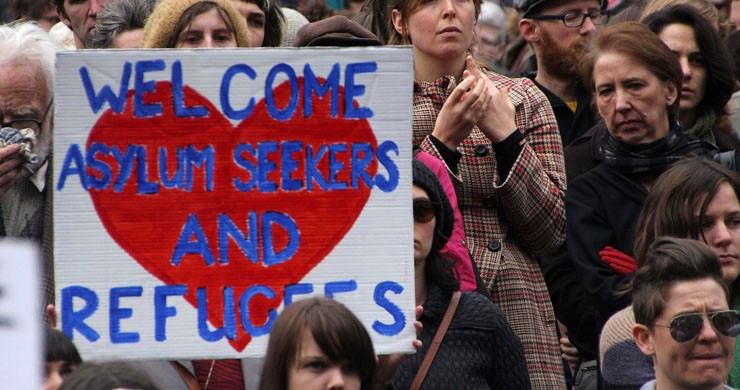Why do people migrate?
There have been many models used to try to explain why people migrate; the most common models today look mostly at what motivates people to migrate which is often called the push – pull model.
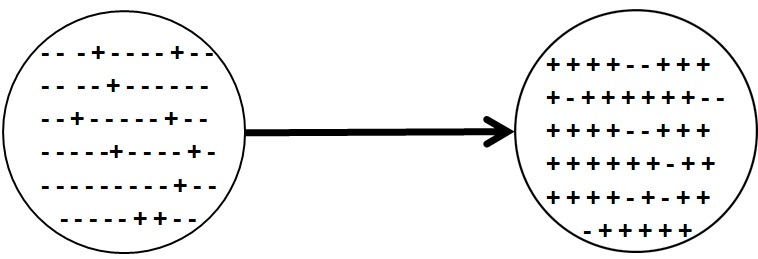
The sketch above is supposed to show what is happening in a potential migrants mind. In one circle the potential migrant sees some positive (+) aspects to the place where they are living – the source region/location. However these are greatly outnumbered by negative (-) aspects. These are called push factors.
Sometimes it could just boil down to one single huge negative (-) aspect like DEATH or RAPE or TORTURE – or sometimes ALL THREE!
The destination region or location shows mostly positive (+) aspects that the migrant believes (the migrant could be wrong) with much fewer negative aspects. The positive aspects are called pull factors.
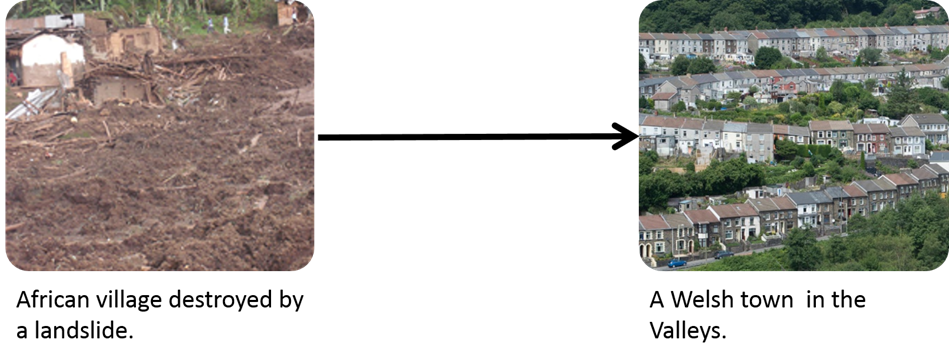
Genuine refugees and Asylum Seekers should get to a place of safety and then go through the legal process of registering with authorities such as officials of the UNHCR – The United Nations High Commissioner for Refugees. From there developed countries such as those in the EU will accept genuine asylum seekers but this system seems to have broken down.
As we have seen EU countries are dealing with hundreds of thousands of new asylum seekers/refugees that have made their ways in a non-legal manner. If we were to include the backlog of people we are talking about a million plus people!
Are all of these people genuine?
Of course not but it is hard to watch parents holding their children above their heads trying to save them from drowning without a large degree of compassion.
Many are escaping dangerous countries such as war torn Syria or Somalia but many are not the destitute or most deserving. One big problem is criminals who have turned their hand to people smuggling – sometimes called human trafficking.
Criminal gangs charge a typical $10,000 (US) to get people into the EU. In source locations often well off families sell pieces of land to raise the money and then send the most educated members of their families. Many of these criminal gangs are actually parts of the terrorist armies destroying parts of countries with barbaric acts creating genuine refugees.
UNICEF Ambassador Lucy Liu raising awareness of the dangers of Human Trafficking
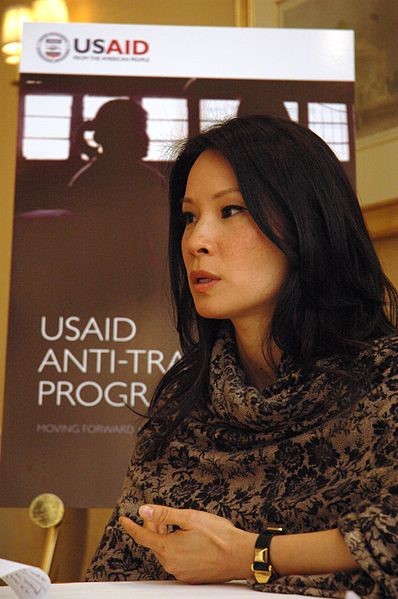
Photo by Bethany used under CC BY
At best people smuggling gangs are criminals at worst (most often) they are funding international terrorism.
Sadly large numbers of migrants are well educated and are from safe and relatively wealthy families that pay to become economic migrants or use other ways to get into more developed countries.
The easiest way that the well-off from many countries become asylum seekers is by getting genuine or forged visas to visit an EU country such as the UK.
If someone has a genuine visa they just ‘overstay’ once their visa runs out.
Forged visas only have to fool the staff in the airport of the source country and it is easy enough to bribe such airport officials in many of these places. Once on a plane the migrant destroys their passport/travel documents and on arrival asks for asylum.
This type of migration is again mostly facilitated by criminal gangs and of course only wealthy families in African countries and across the Middle East can afford this method.
What do we do?
Do we encourage more to do this by accepting the ones who make it and granting them asylum?
This will only aid criminals and terrorists and take away the opportunities of genuine asylum seekers in overcrowded refugee camps in poor nations who are trying to do things the legal way.
This is not just in the EU
Large scale migrations are taking place across the globe from poorer countries to richer ones. In North America criminal gangs and individuals are trying to move people from Central and South America through Mexico and into the USA. Large numbers of people are also making the perilous journey by sea from parts of Asia to Australia.
This year Australia took a very bold move to try to remove the pull factor for the ‘boat migrants’ who were at severe risk of drowning at sea as well as all other non-legal migrants.
Firstly they introduced a policy of ‘Mandatory Detention’ everyone was going to be detained; no non-legal migrants were to be allowed into society and anyone already in normal society who was found was also going to be arrested on detection and detained.
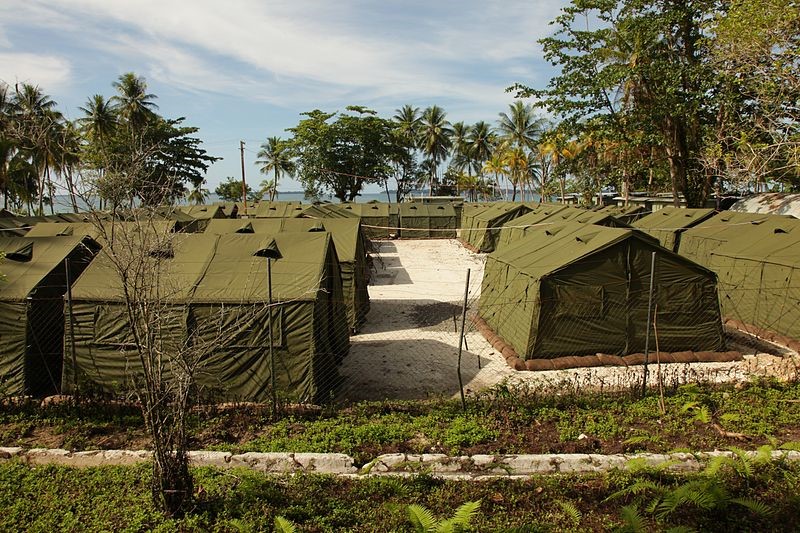
Photo by DIAC Images used under CC BY
Australia had a number of mainland detention facilities but decided that to remove the ‘pull’ factor from illegal migration that new detention facilities would be contracted to the governments of other ‘safe countries’ made up of islands within the Pacific Ocean. Camps such as this one were set up on islands such as this one on Manus Island which is part of Papua New Guinea as well as Nauru and on Christmas Island. The governments and many locals see such a policy as an excellent industrial activity.
The Australian Government has urged areas such as the EU to think of the same policies. Perhaps we could use many of the un/underpopulated islands off the Scottish coastline or do as Australia has done and partner with ‘safe country’ governments in Africa. As you have found out Spain has immigration centres in North Africa.
Spanish Area of Melilla Fence In North Africa.
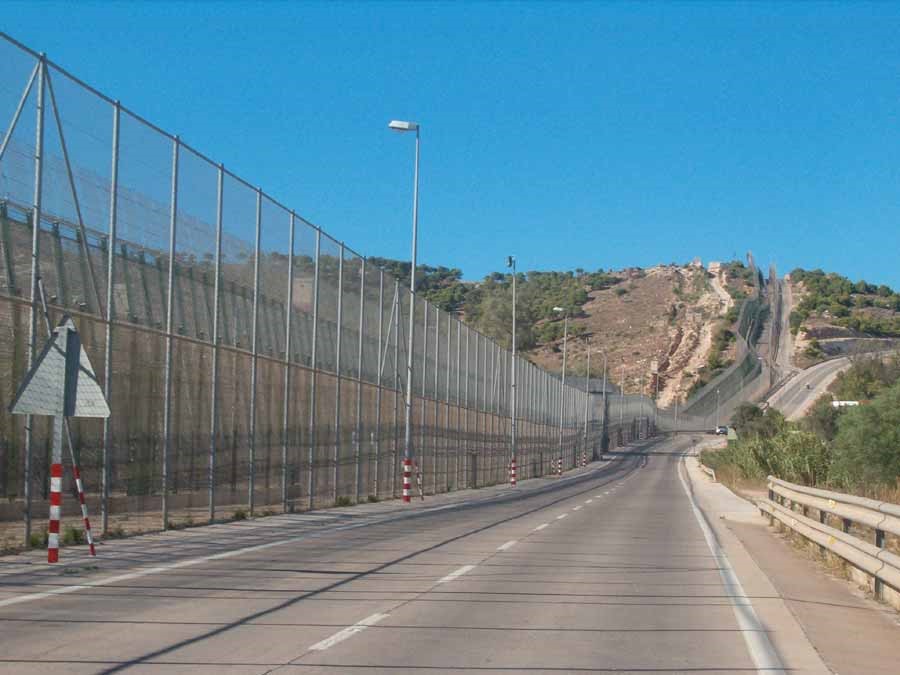
Photo by Ongayo used under CC BY
- Education of the realities of life for illegal migrants in source countries needs to be improved. This is vital
- Strong rules such as those in Australia of mandatory detention of non-legal migrants need to be implemented across the EU; in this way genuine asylum seekers can be processed in centres in countries such as Turkey and Lebanon and then moved safely to countries such as Germany and Sweden which accept the most.
So far in GITN we have made the UK look like a bit of a bad country in terms of accepting asylum seekers and even the biggest part of the EU pot of money (AMIF) meant to deal with migration and asylum but that is about dealing with the pull factors.
The UK is actually a very good country when it comes to dealing with the push factors:
- Military action to stabilise countries and bring peace.
- Funding UNHCR camps and caring for genuine refugees in the first point of safety locations/countries.
- Funding for improving the lives of poor people in the poorer countries especially by funding the Millennium Development Goals.
You can check out all about the Millennium Development Goals (MDG’s) in past editions of GITN. However over the past 15 years they were the focus of improving lives in the poorest parts of the world – reducing the push factors for migration. Next month in September their new replacements called the Sustainable Development Goals (SDG’s) are being launched and GITN will stick with the theme we have started in this edition of migration but focus on ways to reduce the push factors.
After reading all three articles and carrying out the activities. Use the accompanying A3 sheet to help you to carry out a Decision Making Exercise.
Other articles you may find of interest, Mexico to USA migration and Migration in the UK.
